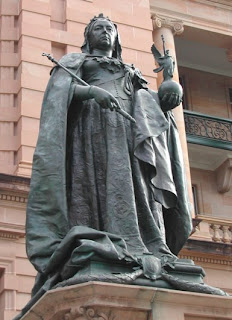The Cathedral of St Stephen
The Cathedral of St Stephen is part of the Catholic Archdiocese of Brisbane. In addition to the Cathedral, the site bounded by Elizabeth, Charlotte and Edward Streets contains numerous buildings that support the Archdiocese. The cathedral was built between 1864 and 1922 in 19th century neo-Gothic style, with extensions made in 1989. Bishop Quinn, the first bishop of the diocese, laid the foundation stone of the cathedral on the feast of St Stephen, 26 December 1863. 
As I've said before, I'm not a very religious person, however in looking at architecture and buildings around Brisbane some of the most spectacular is related to the Church. I hadn't been inside a church for a long while, and I was awestruck by the magnificence of the insides of the chapel. The stained glass windows, the Christ sculpture and the organ literally take your breath away. I was fortunate in that the cathedral was mostly empty, so I was able to saviour the delights largely by myself.
Cheers, I Love Brisbane, Wes.
Click Here for the Google Map Reference for this post.




















































